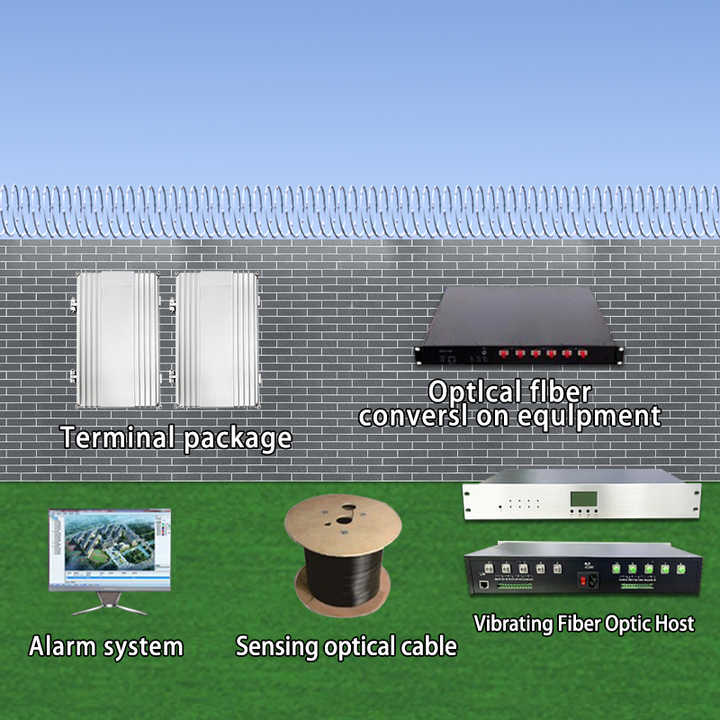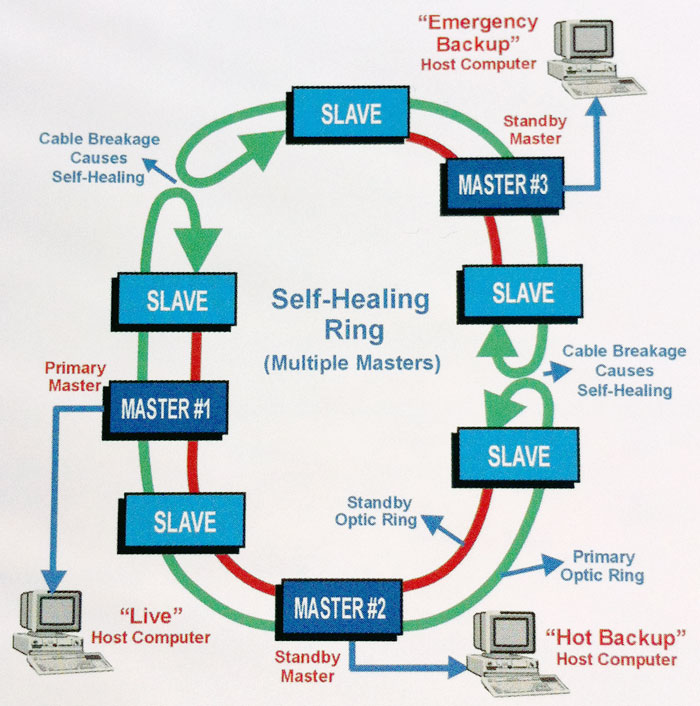Key Features of Fiber Optics Infrastructure for Security Installations You Need to Know
Key Features of Fiber Optics Infrastructure for Security Installations You Need to Know
Blog Article
The Ultimate Overview to Fiber Optic Safety And Security Solutions for Your Service
In a period where safety issues are critical for services, understanding the intricacies of fiber optic technology can be transformative. This guide details just how integrating fiber optic protection systems not only enhances information security yet also offers benefits like resistance to interference and real-time monitoring capabilities.
Comprehending Fiber Optic Innovation

The core of a fiber optic wire is composed of a slim glass or plastic facility, bordered by a cladding layer that shows light back into the core. fiber optic security system. This layout makes certain minimal loss of signal strength, also over extensive distances. There are 2 key kinds of fiber optic cords: single-mode and multi-mode. Single-mode fibers are made for long-distance transmission, while multi-mode fibers are suitable for much shorter distances, frequently used within structures.
Optical fiber are not only much faster but also much more safe and secure than traditional wiring. Their integral resistance to electro-magnetic disturbance and the difficulty of touching into the signal without discovery make them a recommended choice for companies focusing on information honesty and protection. As organizations significantly depend on secure and efficient interaction systems, comprehending fiber optic technology ends up being necessary for notified decision-making.
Secret Benefits of Fiber Optic Security
When considering safety choices for an organization, the advantages of fiber optic systems are especially engaging. Fiber optic modern technology provides remarkable data transmission speeds and bandwidth capacity, making it perfect for taking care of high-resolution video clip feeds from surveillance electronic cameras. This capability ensures that security employees receive real-time information, enhancing overall response times to prospective protection threats.
In addition, fiber optic cable televisions are inherently resistant to electromagnetic disturbance, which can endanger the integrity of traditional copper-based systems. This resistance makes certain that the data transmitted continues to be protected and continuous, giving an extra dependable safety facilities. In addition, fiber optics are less vulnerable to physical damage, as they are made from glass as opposed to steel, decreasing maintenance costs and downtime.
Fiber optic systems provide boosted cybersecurity attributes, including security capabilities that safeguard delicate information from unauthorized access. Jointly, these benefits make fiber optic security systems a durable selection for services seeking to improve their security measures.
Setup Refine and Factors To Consider
Taking into consideration the intricacies entailed, the setup process of fiber optic safety and security systems needs cautious planning and execution. The preliminary step includes an extensive site evaluation to identify ideal locations for cabling and equipment. This analysis ought to think about environmental elements, existing infrastructure, and possible susceptabilities.

Furthermore, the installation has to follow regional building ordinance and industry requirements. This may include coordinating with various stakeholders such as building supervisors, IT groups, and protection workers to make sure seamless assimilation with existing systems.
Post-installation, extensive testing is essential to verify system efficiency and determine any kind of issues that might this post develop. By prioritizing these factors Your Domain Name to consider during the installation process, businesses can make sure a robust and effective fiber optic protection system that fulfills their particular protection demands.
Newest Innovations in Fiber Optic Security
Current innovations in fiber optic technology have dramatically enhanced the abilities of protection systems for businesses. Among one of the most notable developments is the assimilation of fiber optic sensors that can identify vibrations and breaches along the perimeter of a center. These sensing units offer real-time surveillance, allowing rapid feedback to possible violations.
Furthermore, the advancement of distributed fiber optic noticing innovation enables the continual tracking of huge areas with a solitary fiber cable television. This approach not just lowers installment costs but also improves the reliability of monitoring systems by eliminating the requirement for several, different sensing units.
In addition, innovations in multiplexing methods have enabled organizations to transfer huge amounts of information over fiber optic networks, enhancing the abilities of video surveillance systems. High-definition video feeds can currently be sent over cross countries without loss of high quality, making sure that safety and security employees have accessibility to clear and actionable info.
Lastly, the usage of expert system (AI) along with fiber optic systems is reinventing danger detection. AI formulas can examine data from fiber optic networks to recognize unusual patterns or habits, enabling aggressive safety and security actions. These innovations collectively stand for a considerable leap ahead in fiber optic security innovation.
Selecting the Right System for Your Company
Picking the suitable fiber optic safety and security system for your service is crucial for guaranteeing optimum security and assurance. To make an educated selection, evaluate your certain security needs, thinking about variables such as the size of your premises, the nature Discover More of your procedures, and potential susceptabilities.
Begin by reviewing the level of protection needed; as an example, high-risk settings might demand innovative systems with integrated monitoring and breach detection abilities. Next off, take into consideration scalability; as your service expands, your protection system ought to can broadening to accommodate raised demands without substantial overhauls.
Additionally, explore the reliability and efficiency of different systems. Try to find providers with recognized online reputations and client testimonies that confirm to their service high quality. It's also advisable to ask about the technology's compatibility with existing framework, making certain a seamless combination process.
Conclusion
In conclusion, fiber optic safety systems provide a durable remedy for improving organization security facilities. The combination of high-speed information transmission, resistance to electro-magnetic interference, and advanced monitoring abilities considerably enhances total protection (fiber optic security system). By understanding the innovation, identifying its benefits, and taking into consideration the installation process, companies can make enlightened decisions. The most current developments further reinforce the efficiency of these systems, making sure that services remain secure and versatile in an ever-evolving threat landscape.
Report this page